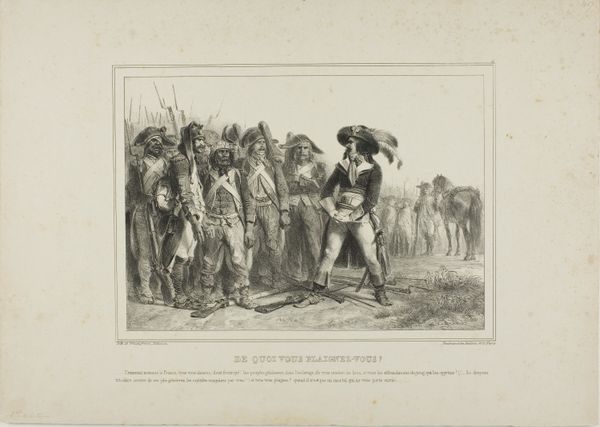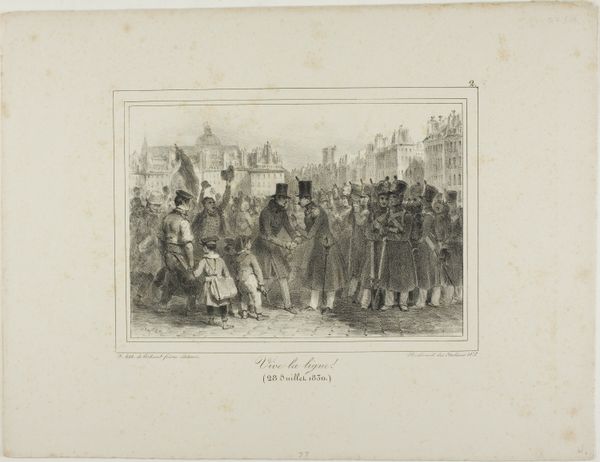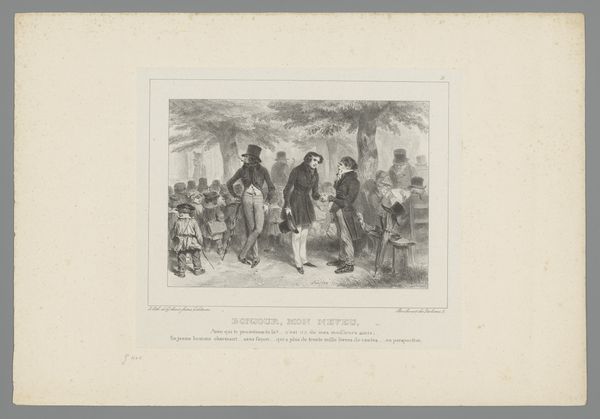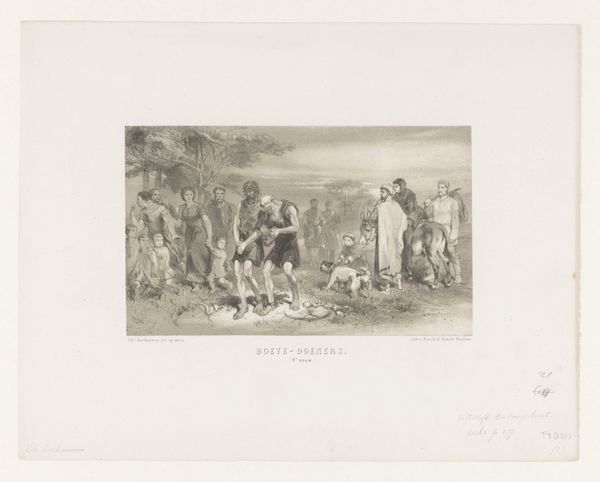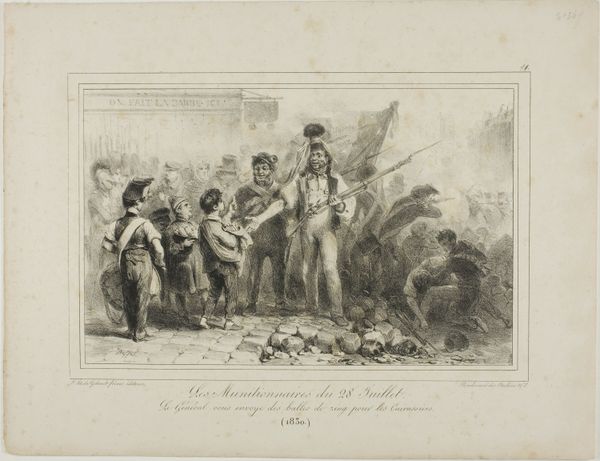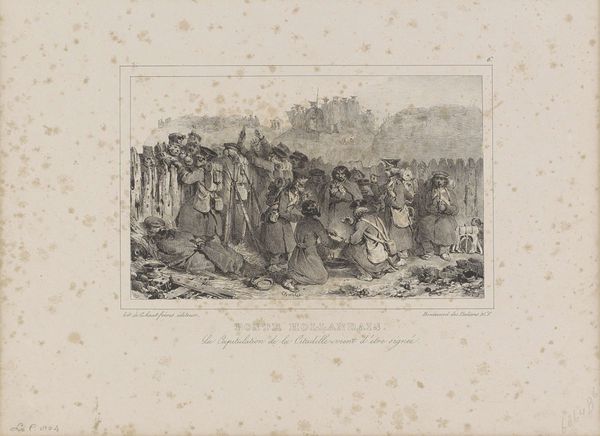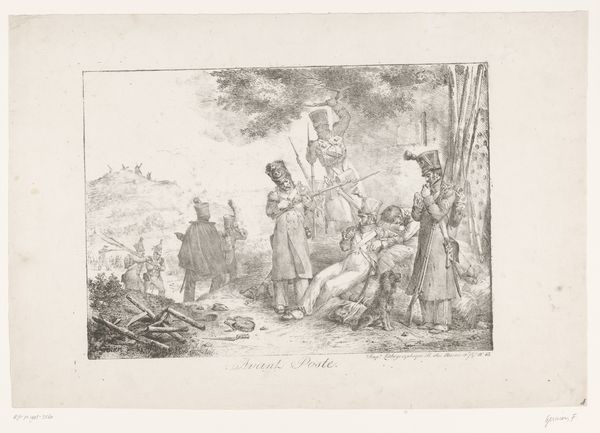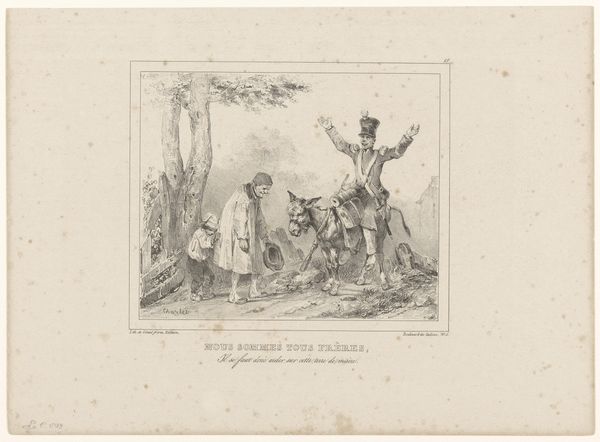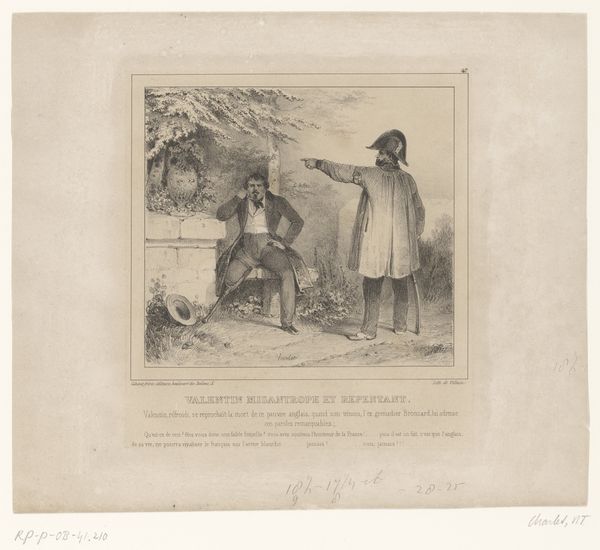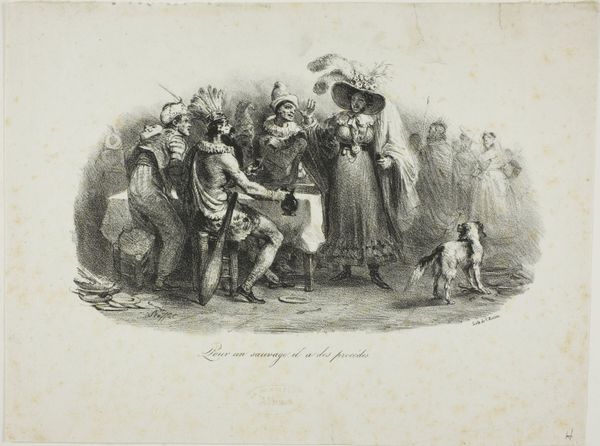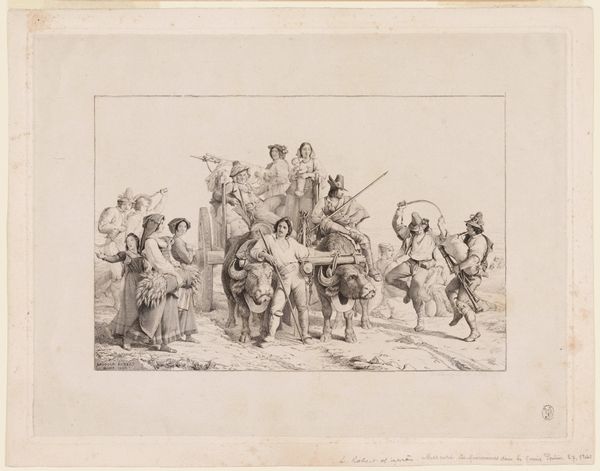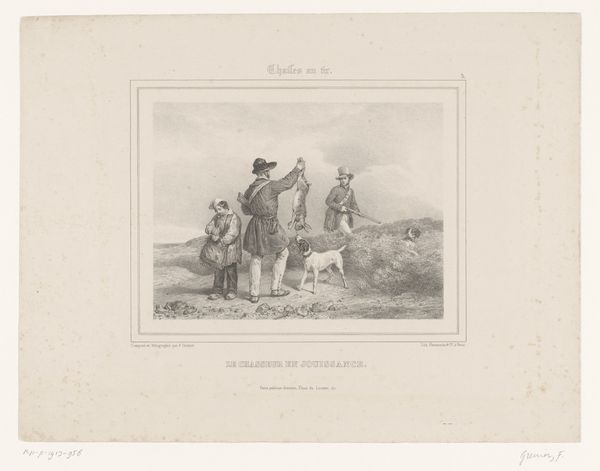
Je n'tire pas! Si la cause était bonne, y n'faudrait pas d'argent pour la défendre. 28 Juillet 1830 1831
0:00
0:00
drawing, lithograph, print
#
drawing
#
narrative-art
#
lithograph
# print
#
figuration
#
romanticism
#
history-painting
Dimensions: 151 × 228 mm (image, to first border); 278 × 370 mm (sheet)
Copyright: Public Domain
Curator: What catches my eye first in this lithograph by Auguste Raffet, created in 1831 and titled "Je n'tire pas! Si la cause était bonne, y n'faudrait pas d'argent pour la défendre. 28 Juillet 1830," is the immediate sense of drama—of conflict arrested, maybe even transcended? It’s quite striking. Editor: Drama, certainly, but it's staged. Raffet freezes a moment loaded with political implications. Look at the title – "I won't shoot! If the cause were just, it wouldn't need money to defend it." That links the depicted moment directly to the July Revolution, critiquing power and its potential for corruption. Curator: Yes, there’s an inherent critique, but I see a larger commentary on revolution and integrity. Those rigid lines of soldiers and then, this officer seemingly mediating? He’s a fulcrum of doubt. And the vulnerable figure next to him seems to personify the revolution's promise being bartered away. Editor: I read that figure not as vulnerability but as complicity. That suited civilian amidst the military underscores how revolutions are always co-opted. It speaks to how systems of power rarely fundamentally shift, they just reshuffle personnel. Also, note the contrast between the almost caricatured common soldiers with their weaponry and the other two. It highlights class disparities in a time of supposed national unity. Curator: Maybe… or maybe that tension makes a compelling case for what could have been; what *should* have been. He renders their human spirit so poignantly – that single figure refusing the act of violence; its so hopeful even if ironically stated! I sense yearning within those strong Romantic lines and figuration. Editor: "Hopeful?" I think you're being generous! For me it evokes disappointment and cynicism, because these scenes were so easily replicated during periods of unrest. Even if there’s initial idealism, power always corrupts, whether the artist explicitly depicts or only implicitly foreshadows. Its reproduction as a print only extends the availability to be reminded. It is as if the artist implies our actions have been pre-determined, replayed over centuries in similar form. Curator: Well, to me the figures seem almost defiant. Despite everything, the spirit of true change remains, however frail. Editor: Perhaps it is not a binary option; the artwork encapsulates disillusionment but invites us to consider resisting cyclical histories of betrayal.
Comments
No comments
Be the first to comment and join the conversation on the ultimate creative platform.
